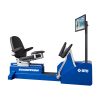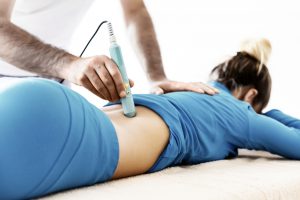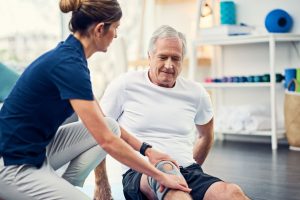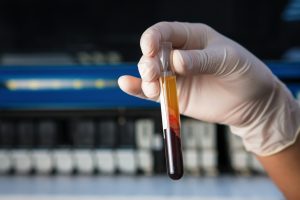
Exercise Guidelines for Platelet-rich Plasma Therapy
Treatment GuidelinesPlatelet-rich plasma (PRP) therapy is an innovative treatment gaining popularity in orthopedic recovery. Working with PRP patients in rehab requires specific exercise guidelines, which we’ll cover in this article.
Platelet-rich plasma (PRP) therapy is an innovative treatment gaining popularity in orthopedic recovery. As a regenerative technique, it promotes healing and cell growth by stimulating the body’s natural processes. According to recent research, PRP benefits several common orthopedic conditions like arthritis, fractures, muscle and tendon injuries, and more.
How PRP Therapy Works
Plasma is the liquid, protein-rich part of the blood. A trained professional draws the blood, uses a machine to extract the plasma, and injects it into the injured area. An orthopedic surgeon, physician or nurse will perform this procedure. Most rehab professionals cannot administer PRP injections, but they may treat people who have had PRP for the same injury. Working with PRP patients in rehab requires specific exercise guidelines, which we’ll cover in this article.
Who Can PRP Therapy Benefit?
In the past, platelet-rich plasma therapy was limited to cosmetic issues. This is because it acts on a cellular level to increase collagen production and regenerate damaged or injured tissues. However, in recent years, it has expanded far beyond the world of cosmetic procedures. PRP therapy is now regarded for its potential to reduce joint degeneration, manage chronic conditions, and relieve pain.
PRP injections have already proven effective in the management of:
- Osteoarthritis in several joints
- Non-union fractures
- Lumbar and cervical spine pain
- Degenerative disc disease
- Piriformis syndrome
- Tendinopathy
Further research shows that PRP therapy can help rehabilitate more diagnoses that physical and occupational therapists commonly treat. Let’s take a closer look at PRP therapy for carpal tunnel syndrome, rotator cuff tears, and Achilles tendon ruptures.
PRP Therapy for Carpal Tunnel Syndrome
PRP therapy benefits clients with carpal tunnel syndrome (CTS) because it could help prevent the need for surgery. While surgeries are becoming less invasive with shorter recovery times, they still present risks. Alternatively, PRP has fewer side effects and does not require an incision.
One study aimed to determine the impact of platelet-rich plasma injections on mild to moderate CTS. Results showed that, three months after treatment, participants demonstrated improved outcomes in motor latency, sensory nerve conduction, and cross-sectional area. This indicates less compression of the median nerve, leading to improved sensation and motion as well as normal nerve circumference. Participants sustained these results up to six months after the initial injection.
For longer-term benefits, one study details that PRP injections successfully managed moderate to severe symptoms one year later. Another piece of research demonstrated greater carpal tunnel symptom reduction than corticosteroids and other injections. In patients who had surgery, PRP therapy accelerated recovery time and more quickly restored grip strength six weeks later.
PRP Therapy for Rotator Cuff Tears
Platelet-rich plasma therapy can also benefit clients with rotator cuff tears. Research compared the effects of PRP and corticosteroids for rotator cuff tears. Results showed that pain reduction and shoulder function had both improved one month following the injection. Yet, six months later, pain returned only for those who got corticosteroids. Other studies support the combined use of full-thickness rotator cuff repair surgery and PRP. Results overwhelmingly showed improved shoulder use, increased healing, a lower risk of future injury, and decreased pain levels. Other research shows this is even effective long-term.
Another regenerative procedure for rotator cuff injuries is in the beginning stages of development. It involves simultaneous use of graphene oxide and PRP injections. While there is not yet human trial evidence surrounding this two-pronged treatment, it has potential to be even more innovative than PRP alone.
PRP Therapy for Achilles Tendon Ruptures
While the use of PRP therapy is still very new for Achilles tendon ruptures, some early research shows promise. A case study showed that surgery and PRP therapy allowed someone to play sports at their previous level within three months. Another study showed that PRP allowed animals to load more weight on the injured tendon earlier than usual. Early loading encourages faster recovery times and enables subjects to resume typical activities more quickly.
Other studies similarly observe the effects of dual approaches for Achilles tendon ruptures. Particularly, one group of researchers looked at the impact of glucocorticoid injections and PRP therapy in tandem. This combination enhanced the regenerative effects of both substances, accelerated healing, and significantly lowered local inflammation.
Side Effects of Platelet-rich Plasma Therapy
Any procedure can have side effects, but those associated with PRP injections are mostly minor. Some side effects that may result from platelet-rich plasma injections include:
- Soreness at the injection site
- Bruising or other discoloration of the skin near the injection site
- Mild swelling
- Infection in or surrounding the affected area (extremely rare)
- Allergic reaction (extremely rare)
- Nerve injury (if the needle contacts a nerve)
- Artery or vein damage, which can lead to a blood clot
Infections and allergic reactions are extremely rare, but possible with any type of injection. These risks are significantly lower with platelet-rich plasma, because the injections contain the person’s own plasma. The other potential side effects on this list accompany any intramuscular injection.
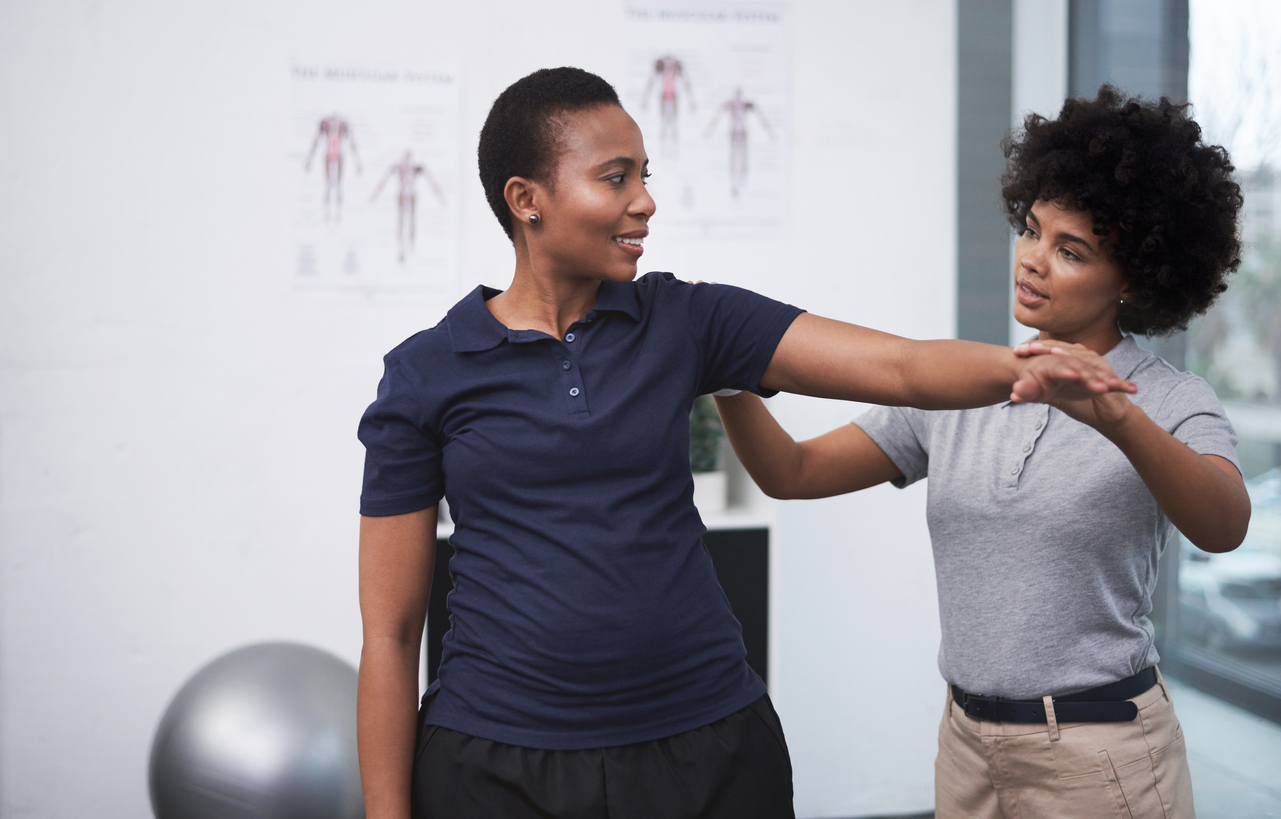
Rehab Exercises During PRP Therapy
Keep in mind that patients who have had PRP may perform differently in therapy. Rehabilitation providers should adhere to specific measures when working with patients who have recently had PRP. These measures depend on the timing of rehab exercises after platelet-rich plasma injections, as follows:
- Phase 1 (0-3 days after PRP injection)
- Immobilization of the affected area
- Gentle AROM apart from immobilization equipment
- Reduce pain
- No other rehabilitation during this time
- Phase 2 (3-14 days after PRP injection)
- AROM three times daily for five minutes at a time
- Weight-bearing as tolerated
- Wean patients off immobilization devices
- Begin lower body exercises if the site is on the upper body (and vice versa)
- No other rehabilitation during this time
- Phase 3 (14-49 days after PRP injection)
- 3-4 repetitions of sustained stretches to affected area at least once per day
- Joint mobilization as needed
- Isometric and concentric strengthening progressing to eccentric (as able based on pain)
- Non-impact cardiovascular activities
- Core strengthening
- Balance training and proprioceptive input
- Rehabilitation sessions once every 1-2 weeks
- Phase 4 (49-70 days after PRP injection)
- Rehabilitation sessions once every 1-3 weeks
- Eccentric and concentric strengthening across multiple planes
- Dynamic neuromuscular control to assist with functional activities
- Core strengthening
- Increased repetitions, frequency, and resistance for strengthening exercises (as tolerated)
- Return to sport/work programs
- Cardiovascular exercises that mimic energy demands associated with sports or work
Many studies show the benefits of platelet-rich plasma therapy for a range of musculoskeletal conditions. In addition to this evidence, exercise guidelines help rehab providers offer the best care to patients who have undergone PRP. Physical rehab for these patients can protect the affected area and relieve pain. From there, therapists can advise patients in strengthening to help restore their function in a timely manner.
Brittany Ferri, PhD, OTR/L, CPRP is an Occupational Therapist and owner of Simplicity of Health where she provides health writing, consulting, and program development services. She is passionate about client-centered care and the intersection of technology and health. To learn more, visit www.simplicityofhealth.com
References:
- Buntragulpoontawee, M., Chang, K. V., Vitoonpong, T., Pornjaksawan, S., Kitisak, K., Saokaew, S., & Kanchanasurakit, S. (2021). The Effectiveness and Safety of Commonly Used Injectates for Ultrasound-Guided Hydrodissection Treatment of Peripheral Nerve Entrapment Syndromes: A Systematic Review. Frontiers in pharmacology, 11, 621150. https://doi.org/10.3389/fphar.2020.621150
- Chen, S. R., Shen, Y. P., Ho, T. Y., Li, T. Y., Su, Y. C., Chou, Y. C., Chen, L. C., & Wu, Y. T. (2021). One-Year Efficacy of Platelet-Rich Plasma for Moderate-to-Severe Carpal Tunnel Syndrome: A Prospective, Randomized, Double-Blind, Controlled Trial. Archives of physical medicine and rehabilitation, 102(5), 951–958. https://doi.org/10.1016/j.apmr.2020.12.025
- Morimoto, S., Iseki, T., Nakayama, H., Shimomura, K., Nishikawa, T., Nakamura, N., & Tachibana, T. (2021). Return to the original sport at only 3 months after an Achilles tendon rupture by a combination of intra-tissue injection of freeze-dried platelet-derived factor concentrate and excessively early rehabilitation after operative treatment in a male basketball player: A case report. Regenerative therapy, 18, 112–116. https://doi.org/10.1016/j.reth.2021.05.002
- Ruan, D., Fei, Y., Qian, S., Huang, Z., Chen, W., Tang, C., Xiang, X., Xu, J., Yin, Z., Chen, X., Heng, B. C., Liu, W., Shen, W., & Ouyang, H. (2021). Early-Stage Primary Anti-inflammatory Therapy Enhances the Regenerative Efficacy of Platelet-Rich Plasma in a Rabbit Achilles Tendinopathy Model. The American journal of sports medicine, 49(12), 3357–3371. https://doi.org/10.1177/03635465211037354
- Shen, Y. P., Li, T. Y., Chou, Y. C., Chen, L. C., & Wu, Y. T. (2021). Outcome predictors of platelet-rich plasma injection for moderate carpal tunnel syndrome. International journal of clinical practice, 75(10), e14482. https://doi.org/10.1111/ijcp.14482
- Trull-Ahuir, C., Sala, D., Chismol-Abad, J., Vila-Caballer, M., & Lisón, J. F. (2020). Efficacy of platelet-rich plasma as an adjuvant to surgical carpal ligament release: a prospective, randomized controlled clinical trial. Scientific reports, 10(1), 2085. https://doi.org/10.1038/s41598-020-59113-0
- University of Wisconsin Sports Medicine. (2014). Platelet-Rich Plasma Rehabilitation Guidelines. Retrieved from https://www.uwhealth.org/files/uwhealth/docs/sportsmed/sports_med_PRP.pdf
- Yu, T. Y., Pang, J. S., Lin, L. P., Cheng, J. W., Liu, S. J., & Tsai, W. C. (2021). Platelet-Rich Plasma Releasate Promotes Early Healing in Tendon After Acute Injury. Orthopaedic journal of sports medicine, 9(4), 2325967121990377. https://doi.org/10.1177/2325967121990377

